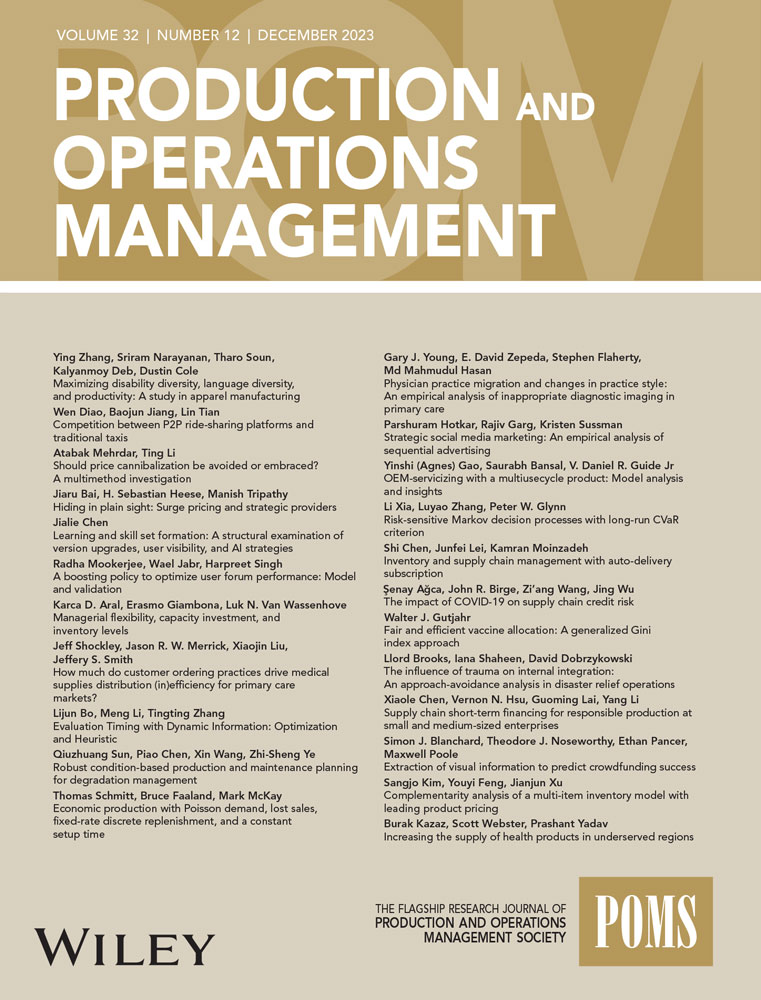EXPRESS:双面市场中的跨期价格竞争:重新审视初创平台的 "跷跷板 "原则
IF 4.8
3区 管理学
Q1 ENGINEERING, MANUFACTURING
引用次数: 0
摘要
定价是平台商业模式探索中的一个关键因素,尤其是对于那些在启动双面市场时面临 "冷启动 "问题的初创企业而言。在静态环境下,文献建议采用 "跷跷板原则"(即一边收取相对较低的价格,甚至补贴,另一边收取较高的价格)作为解决方案。然而,人们对 "跷跷板原则 "在动态环境中是否仍然有效,以及它如何受到保留能力和早期财务压力等时际因素的影响知之甚少。本文建立了一个博弈论模型来研究多期环境下的最优定价策略。我们首先证明,在对称情况下,对跷跷板原则的调整(即单期和多期价格差距之间的差异)会随着平台保留率的增加而增加。在非对称情况下,初创平台比成熟的竞争对手面临更大的早期财务压力,这一观点也同样适用。有趣的是,初创平台应该向利润较低的一方收取更高的价格,以实现差异化,避免价格战。我们还通过考虑内生的、对价格敏感的留存率来探索这些见解的稳健性。本文章由计算机程序翻译,如有差异,请以英文原文为准。
EXPRESS: Intertemporal Price Competition in the Two-Sided Market: Reexamining the Seesaw Principle for Startup Platforms
Pricing represents a crucial element in the platform business model search, particularly for startups that face the “cold-start” problem in launching a two-sided marketplace. In a static setting, literature recommends the “seesaw principle” (i.e., charging a relatively low price, even subsidizing, on one side and a high price on the other) as the solution. However, little is known about whether the seesaw principle still works in a dynamic setting and how it is influenced by intertemporal factors like retention capabilities and early-period financial pressure. This paper develops a game-theoretic model to examine optimal pricing strategies in a multi-period setting. We first show that, in the symmetric scenario, the adjustment to the seesaw principle (i.e., the difference between the single- and multi-period price gaps) increases with the platforms’ retention rate. This insight holds true in the asymmetric case where a startup platform faces greater early-period financial pressure than an established competitor. Interestingly, the startup platform should charge a higher price to the less profitable side to differentiate itself and avoid a price war. We also explore the robustness of these insights by considering an endogenous, price-sensitive retention rate.
求助全文
通过发布文献求助,成功后即可免费获取论文全文。
去求助
来源期刊

Production and Operations Management
管理科学-工程:制造
CiteScore
7.50
自引率
16.00%
发文量
278
审稿时长
24 months
期刊介绍:
The mission of Production and Operations Management is to serve as the flagship research journal in operations management in manufacturing and services. The journal publishes scientific research into the problems, interest, and concerns of managers who manage product and process design, operations, and supply chains. It covers all topics in product and process design, operations, and supply chain management and welcomes papers using any research paradigm.
 求助内容:
求助内容: 应助结果提醒方式:
应助结果提醒方式:


